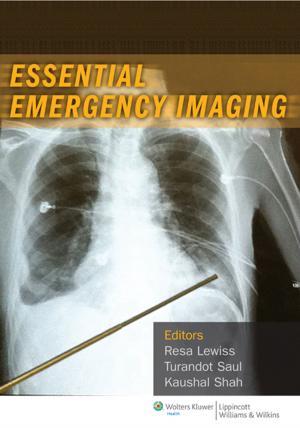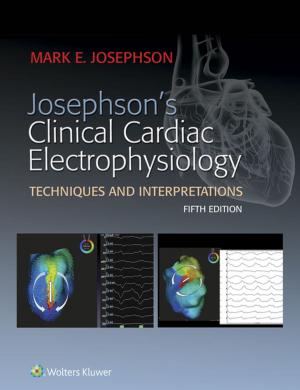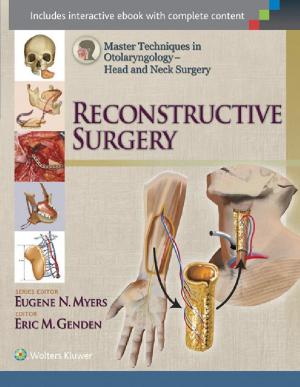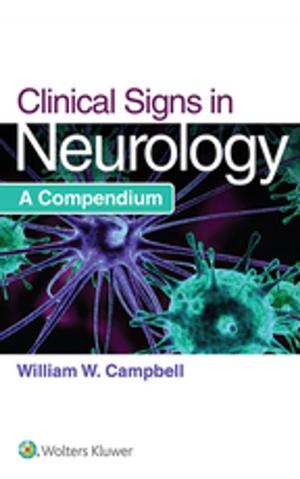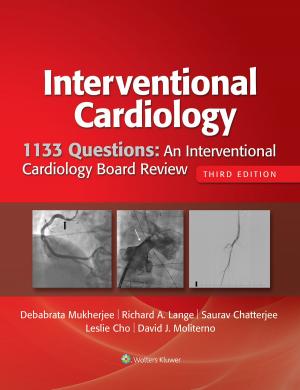ECG Interpretation: An Incredibly Easy Pocket Guide
Nonfiction, Health & Well Being, Medical, Nursing, Reference| Author: | LWW | ISBN: | 9781496352170 |
| Publisher: | Wolters Kluwer Health | Publication: | October 11, 2016 |
| Imprint: | Wolters Kluwer Health | Language: | English |
| Author: | LWW |
| ISBN: | 9781496352170 |
| Publisher: | Wolters Kluwer Health |
| Publication: | October 11, 2016 |
| Imprint: | Wolters Kluwer Health |
| Language: | English |
New at ECG interpretation? No need to go it alone—keep the basic skills and concepts at your fingertips, with ECG Interpretation: An Incredibly Easy!® Pocket Guide. Use this enjoyable reference for at-a-glance reviews of how to use and monitor ECG equipment, obtain and interpret rhythm strips, and accurately spot and treat arrhythmias. Full of helpful charts, illustrations, and easy-to-relate-to definitions, this is the perfect on-the-spot guide for students, new nurses, and all those looking for expert guidance on the job. Increase on-the-job or classroom confidence with this must-have pocket guide, featuring: NEW and updated content in quick-read, bulleted format, with easy-to-remember guidance on topics including: o Identifying and interpreting atrial, junctional, ventricular, sinus node, and atrioventricular arrhythmias o ECG effects of electrolyte imbalances o ECG effects of antiarrhythmics o Basic and advanced electrocardiography, including equipment uses and components o Waveform types and components Dozens of photos, drawings, and diagrams clearly outline key concepts, including: 8-step method of ECG evaluation Identifying and monitoring disorders, rhythm disturbances, and electrolyte imbalances Placement of different types of leads Identifying and solving monitor problems Interventions – Administering nonpharmacologic and pharmacologic treatments for arrhythmias, including pacemakers, ICDs, and antiarrhythmics Special features: Memory jogger – Memory tricks that help you remember key concepts and treatments Through the ages – Identifies differences in ECG interpretation and pacemaker needs, according to the patient’s age Help desk – Explanations of monitoring equipment components and functions What causes it – Causes of different disorders, imbalances, and arrhythmias What to look for – Tips on identifying and interpreting arrhythmia How it’s treated – Steps to take for a variety of treatment “Nurse Joy” and “Nurse Jake” – Expert insights on ECG methods and problem-solving End-of-book guides and tests: The Test Zone – Practice Q&A Quick guide to arrhythmias ACLS algorithms: The Pulseless Arrest, Tachycardia, and Bradycardia Guide to antiarrhythmic drugs Guide to choosing monitoring leads
New at ECG interpretation? No need to go it alone—keep the basic skills and concepts at your fingertips, with ECG Interpretation: An Incredibly Easy!® Pocket Guide. Use this enjoyable reference for at-a-glance reviews of how to use and monitor ECG equipment, obtain and interpret rhythm strips, and accurately spot and treat arrhythmias. Full of helpful charts, illustrations, and easy-to-relate-to definitions, this is the perfect on-the-spot guide for students, new nurses, and all those looking for expert guidance on the job. Increase on-the-job or classroom confidence with this must-have pocket guide, featuring: NEW and updated content in quick-read, bulleted format, with easy-to-remember guidance on topics including: o Identifying and interpreting atrial, junctional, ventricular, sinus node, and atrioventricular arrhythmias o ECG effects of electrolyte imbalances o ECG effects of antiarrhythmics o Basic and advanced electrocardiography, including equipment uses and components o Waveform types and components Dozens of photos, drawings, and diagrams clearly outline key concepts, including: 8-step method of ECG evaluation Identifying and monitoring disorders, rhythm disturbances, and electrolyte imbalances Placement of different types of leads Identifying and solving monitor problems Interventions – Administering nonpharmacologic and pharmacologic treatments for arrhythmias, including pacemakers, ICDs, and antiarrhythmics Special features: Memory jogger – Memory tricks that help you remember key concepts and treatments Through the ages – Identifies differences in ECG interpretation and pacemaker needs, according to the patient’s age Help desk – Explanations of monitoring equipment components and functions What causes it – Causes of different disorders, imbalances, and arrhythmias What to look for – Tips on identifying and interpreting arrhythmia How it’s treated – Steps to take for a variety of treatment “Nurse Joy” and “Nurse Jake” – Expert insights on ECG methods and problem-solving End-of-book guides and tests: The Test Zone – Practice Q&A Quick guide to arrhythmias ACLS algorithms: The Pulseless Arrest, Tachycardia, and Bradycardia Guide to antiarrhythmic drugs Guide to choosing monitoring leads









